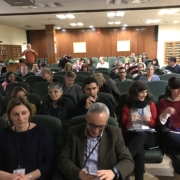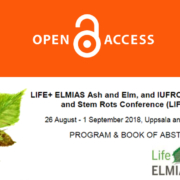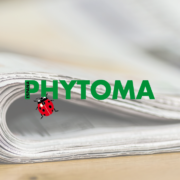First Report of the Invasive Ash Dieback Pathogen Hymenoscyphus fraxineus on Fraxinus excelsior and F. angustifolia in Serbia
Nenad Keča 1*, Thomas Kirisits 2 and Audrius Menkis 3
1 University of Belgrade, Faculty of Forestry, Belgrade, Department of Forestry, 1, Kneza Višeslava street, 11030 Belgrade, Serbia. 2 Institute of Forest Entomology, Forest Pathology and Forest Protection (IFFF), Department of Forest and Soil Sciences, University of Natural Resources and Life Sciences (BOKU), Vienna, Austria. 3 Department of Forest Mycology and Plant Pathology, Uppsala BioCenter, Swedish University of Agricultural Sciences, Uppsala, Sweden.
*Corresponding author: nenad.keca@sfb.bg.ac.rs
Abstract
In Serbia, unambiguous symptoms of ash dieback disease were for the first time observed in September 2015. Symptoms included dead shoots and occasionally small necrotic lesions in the bark accompanied by characteristic wood discoloration. Isolation of fungal cultures from symptomatic tissues of F. excelsior and F. angustifolia and their sequencing using the internal transcribed spacer of the rDNA (ITS rDNA) as a marker confirmed the presence of the ash dieback pathogen, Hymenoscyphus fraxineus.
Acknowledgements
This work has received funding from the European Union’s Horizon 2020 research and innovation programme under grant agreement no. 635646, POnTE (Pest Organisms Threatening Europe).
Published on 2017 by BALTIC FORESTRY








